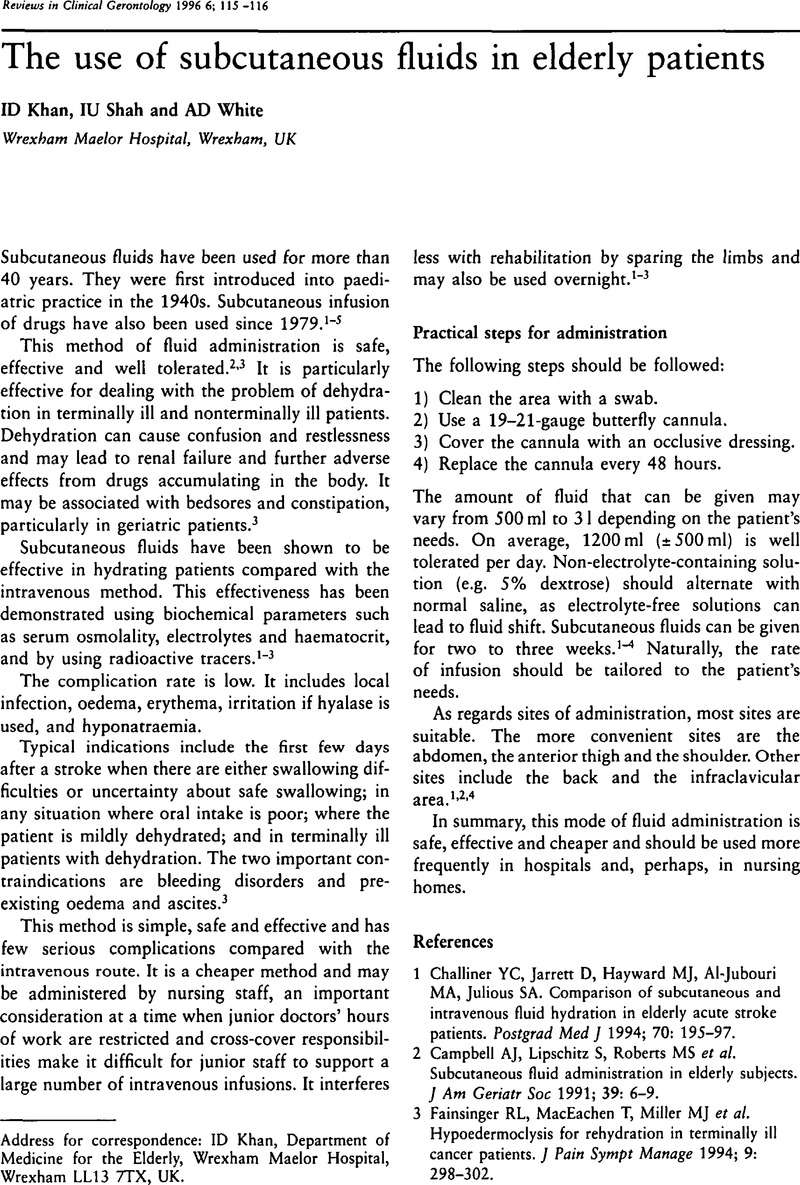No CrossRef data available.
Article contents
The use of subcutaneous fluids in elderly patients
Published online by Cambridge University Press: 17 November 2008
Abstract
An abstract is not available for this content so a preview has been provided. Please use the Get access link above for information on how to access this content.

- Type
- Occasional paper
- Information
- Copyright
- Copyright © Cambridge University Press 1996
References
1Challiner, YC, Jarren, D, Hayward, MJ, Al-Jubouri, MA, Julious, SA. Comparison of subcutaneous and intravenous fluid hydration in elderly acute stroke patients. Postgrad Med J 1994; 70: 195–97.CrossRefGoogle ScholarPubMed
2Campbell, AJ, Lipschitz, S, Roberts, MS et al. Subcutaneous fluid administration in elderly subjects. J Am Geriatr Soc 1991; 39: 6–9.Google Scholar
3Fainsinger, RL, MacEachen, T, Miller, MJ et al. Hypoedermoclysis for rehydration in terminally ill cancer patients. J Pain Sympt Manage 1994; 9: 298–302.CrossRefGoogle ScholarPubMed
4Freeman, M. Subcutaneous fluids infusion: practical aspects. Aust family Physician 1991; 20: 1357.Google Scholar
5O'Neill, WM. Subcutaneous infusions: a medical last rite [Editorial]. Palliat Med 1994; 8: 91–93.Google Scholar


